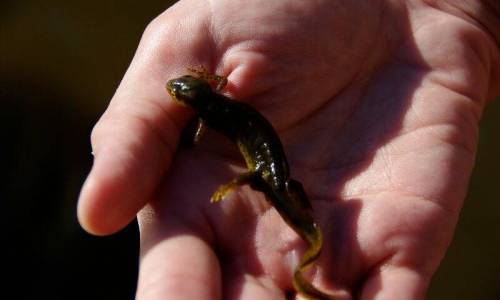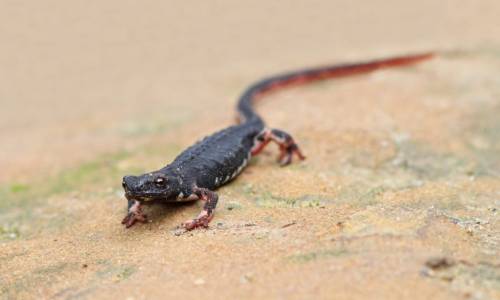
Salamandrine
The salamander is an Italian endemism, an exclusive and characteristic presence of the Apennines, and cannot be found in any other part of the world. It is representative of naturalistic values which translate into eco-systemic services that are the basis for the life of most animals, man included.
For many thousands of years it has carved out an ecological niche in almost always inaccessible areas of the Apennine mountains where predators such as fish do not arrive because they are blocked by natural obstacles such as waterfalls or the at least partial drainage of the watercourse in summer. Wild recesses contain perennial and very clean waters, facilitating the survival and evolution of the species.
The northern salamander, also called “del Savi" (Salamandrina perspicillata), lives in the Pesaro Apennines. The length of the adults ranges from 9 to 11 cm, including the tail. The body is slender, without a crest; all the legs have four toes and the tail has a rounded section. The undersides of the legs and tail are bright red. The livery of the young has greyish and yellowish tints. Sexual dimorphism is almost invisible, mostly limited to a longer tail in males.
The body is almost all black in the upper part so that it can blend into the undergrowth.Each individual has a clear spot in the shape of glasses on the head, at the level of the forehead – this stain is the identification of every single specimen and is nothing more than an element
of disturbance and persuasion aimed at predators. To defend itself the salamander shows the whole lower part of the body spotted with red and white, a mix of colors that are known as “aposematic", that is “warning" for predators that in seeing them generally give up, presaging poisonous substances. Alternatively, they can use another technique: lethargy. Monte Catria and above all Monte Nerone preserve some of the most important populations in Italy and in the world, which can be traced in various valleys such as, for example, the Rio Vitoschio (Fosso Pisciarello) and the Fosso del Presale, both on the Nerone, represent the habitat ideal.
Since 2008, a salamander conservation project that is unique in Italy has been underway on Monte Nerone. Thanks to the interest of passionate herpetologists and the Province of Pesaro and Urbino, European funding and numerous volunteers have been set up and monitored every year. Their aim is to prevent these small amphibians from ending up on Provincial Road 82 of Rocca Leonella where they would be crushed by cars. Salamandrina perspicillata is a strictly protected species according to the 1979 Bern Convention (Annex II) and a species of community interest that requires special conservation areas (Annex II) and rigorous protection (Annex IV) according to the Habitats Directive 92/43 of 1992.


